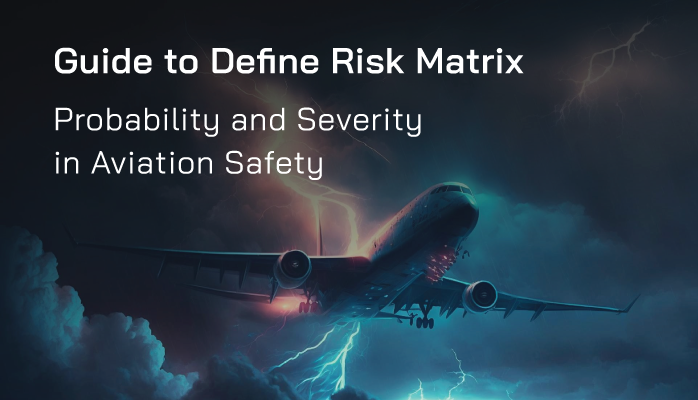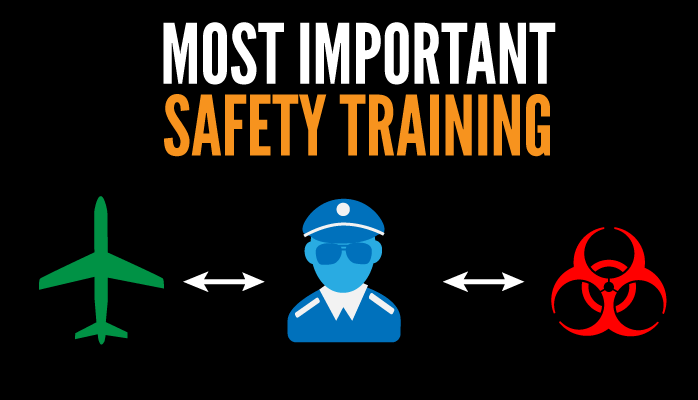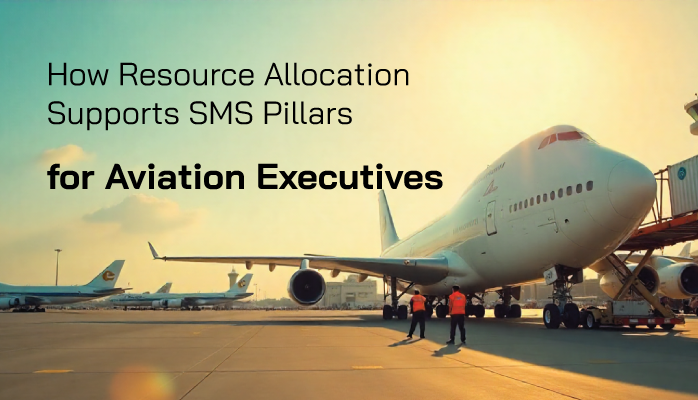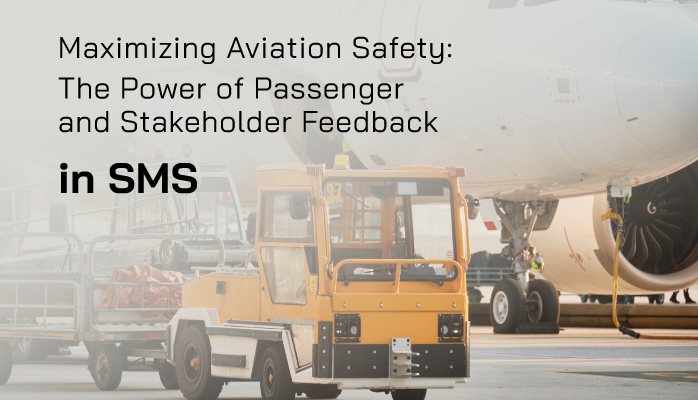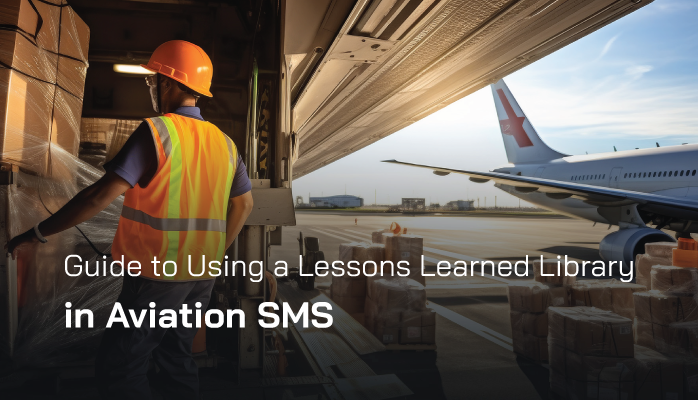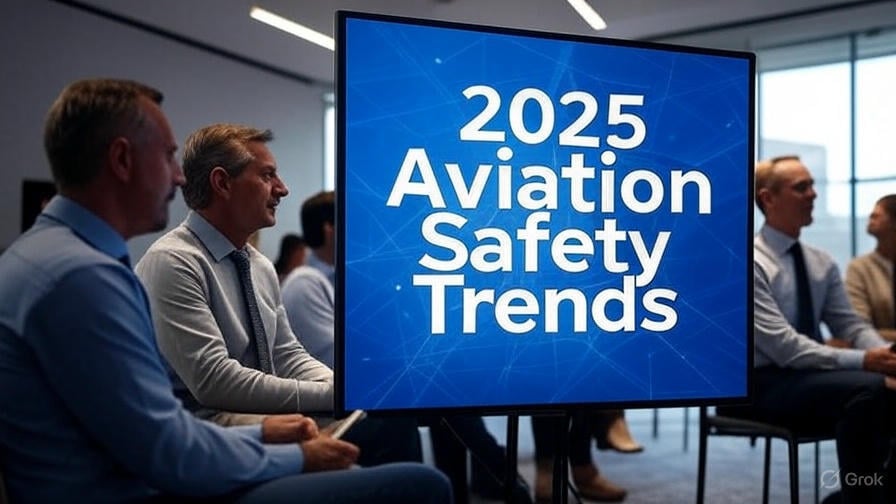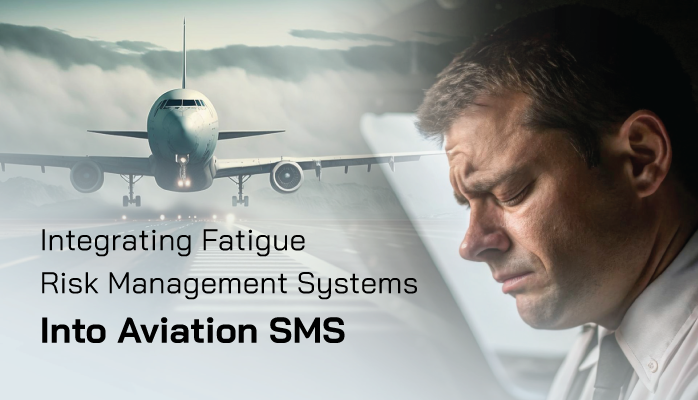Stu Martin
Stu Martin is an accomplished aerospace safety engineer with over 25 years of experience in the aviation industry. Beginning his career on the ramp, Stu developed a hands-on understanding of aircraft operations, maintenance, and safety protocols. His journey from ground operations to engineering has equipped him with a unique perspective on aviation safety, blending practical expertise with technical rigor. Stu has contributed to numerous safety initiatives, including the development of risk assessment frameworks and incident investigation protocols, earning recognition for his commitment to enhancing operational safety. A respected voice in the field, he continues to advocate for robust safety cultures within aviation organizations worldwide.
Risk Matrix Probability and Severity in Aviation Safety
A risk matrix is a vital tool in aviation safety management systems (SMS), enabling organizations to assess and prioritize risks by combining their probability and severity. This guide outlines how aviation safety managers can define these criteria to create an effective, organization-specific risk matrix.
Read More
Topics:
2-Safety Risk Management
For new aviation safety managers, training staff and leadership on Safety Management System (SMS) concepts can feel like a steep climb. One of the toughest challenges is preparing accountable executives—senior leaders like CEOs, directors, or operations managers—to effectively oversee SMS performance.
These executives are critical to SMS success, as regulators like the FAA, EASA, or ICAO expect them to demonstrate active leadership in managing safety risks and ensuring compliance during audits.
Read More
Topics:
4-Safety Promotion,
3-Safety Assurance,
Risk Management Training,
FAA Compliance,
Safety Culture
Why Safety Managers Fail to Get Budget
For new aviation safety managers, training staff on Safety Management System (SMS) concepts can feel like navigating uncharted skies. The complexity of SMS, combined with the need to engage accountable executives—senior leaders responsible for SMS oversight—often leaves managers unsure of where to begin.
Read More
Topics:
4-Safety Promotion,
3-Safety Assurance,
1-Safety Policy,
2-Safety Risk Management,
Risk Management Training,
FAA Compliance,
Safety Culture
Maximizing Aviation Safety
In the fast-paced skies of aviation, ensuring safety is the ultimate mission. Aviation safety managers and accountable executives are tasked with ensuring that Safety Management Systems (SMS) are
- robust,
- proactive, and
- continuously improving.
Read More
Topics:
4-Safety Promotion,
3-Safety Assurance
Using a Lessons Learned Library
In aviation, safety is paramount, and a Safety Management System (SMS) is critical for managing risks. A Lessons Learned Library is a key component, storing insights from past incidents to prevent future issues.
This quick guide outlines how aviation safety managers can effectively use this tool to enhance safety and compliance.
Benefits
- Commitment: Demonstrates management’s dedication to safety.
- Training: Provides real-world case studies for employee education.
- Transparency: Fosters openness within and beyond the organization.
- Cost Savings: Prevents incidents, reducing financial losses.
- Compliance: Supports regulatory audits with documented safety promotion.
Read More
Topics:
4-Safety Promotion
2025 Aviation Safety Trends
Aviation Safety Management Systems (SMS) are at the forefront of ensuring safety in an increasingly complex industry. With regulatory changes, technological advancements, and a heightened focus on proactive risk management, aviation safety professionals must stay informed to maintain compliance, enhance safety, and optimize operations.
This comprehensive article explores the top ten SMS trends shaping aviation in 2025, offering in-depth insights, practical strategies, and actionable steps to elevate your safety programs.
Read More
Topics:
Aviation SMS Database,
4-Safety Promotion
Integrating Fatigue Risk Management Systems
Fatigue is a critical safety concern in aviation, where human performance directly impacts operational outcomes. Integrating a Fatigue Risk Management System (FRMS) into an Aviation Safety Management System (SMS) enhances safety by proactively addressing fatigue-related risks.
This article explores the importance, benefits, and practical steps of integrating FRMS into aviation SMS.
Read More
Topics:
2-Safety Risk Management
CEO Commitment to Safety
Training staff on Safety Management System (SMS) concepts can be a daunting task for new aviation safety managers, especially when guiding accountable executives—senior leaders responsible for SMS oversight.
Read More
Topics:
4-Safety Promotion,
3-Safety Assurance,
1-Safety Policy,
Risk Management Training,
FAA Compliance,
Safety Culture
SMS Pro Professional Conquers MROs New Regulatory Challenges
As Maintenance, Repair, and Overhaul (MRO) organizations face stricter FAA, ICAO, EASA, and Transport Canada regulations in 2025, compliance is no longer optional—it's critical.
Whether you're a small MRO with a single hangar or a large network like Dassault Falcon Jet with 400 employees across multiple sites, SMS Pro offers tailored Safety Management System (SMS) solutions to meet your needs. With our restructured plans—Basic, Professional, and Enterprise—SMS Pro ensures regulatory compliance, operational efficiency, and cost savings, regardless of your size or complexity.
Here’s why SMS Pro Professional is the go-to choice for MROs navigating the regulatory landscape.
Read More
Topics:
Aviation SMS Implementation,
4-Safety Promotion,
3-Safety Assurance,
Risk Management Software,
1-Safety Policy,
2-Safety Risk Management
FAA’s Safety Risk Management (SRM) Process and System Description Element
The Federal Aviation Administration’s (FAA) safety risk management (SRM) compliance requirement for System Description has one clear goal:
Read More
Topics:
2-Safety Risk Management,
FAA Compliance

